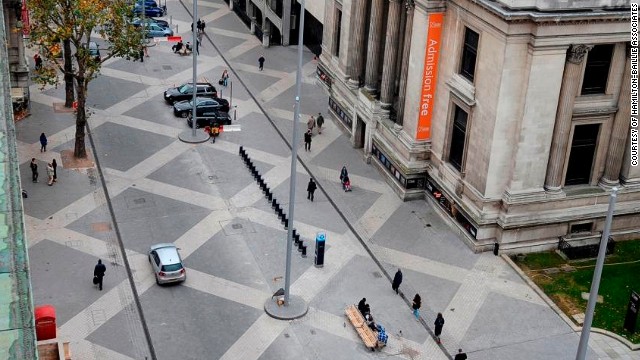

can ride two abreast - and it can be safer to do so, particularly in larger groups or when accompanying children or less experienced riders.
 should be considerate of the needs of other road users when riding in groups. keeping at least 0.5 metres (just over 1.5 feet) away from the kerb edge (and further where it is safer) when riding on busy roads with vehicles moving faster than them. riding in the centre of their lane on quiet roads, in slower-moving traffic and at the approach to junctions or road narrowings. remember that people walking may be deaf, blind, or partially sighted. slow down when necessary and let people walking know they are there (for example, by ringing their bell). not pass people walking, riding a horse or driving a horse-drawn vehicle closely or at high speed, particularly from behind. People walking should take care not to obstruct or endanger other users of shared spaces. People cycling, riding a horse or driving a horse drawn vehicle should respect the safety of people walking in these spaces. Walking, cycling or riding in shared spaces People driving, riding a motorcycle, or cycling must give way to people on a zebra crossing and people walking and cycling on a parallel crossing. Traffic wanting to turn into a road should give way to people who have started crossing who have priority.
should be considerate of the needs of other road users when riding in groups. keeping at least 0.5 metres (just over 1.5 feet) away from the kerb edge (and further where it is safer) when riding on busy roads with vehicles moving faster than them. riding in the centre of their lane on quiet roads, in slower-moving traffic and at the approach to junctions or road narrowings. remember that people walking may be deaf, blind, or partially sighted. slow down when necessary and let people walking know they are there (for example, by ringing their bell). not pass people walking, riding a horse or driving a horse-drawn vehicle closely or at high speed, particularly from behind. People walking should take care not to obstruct or endanger other users of shared spaces. People cycling, riding a horse or driving a horse drawn vehicle should respect the safety of people walking in these spaces. Walking, cycling or riding in shared spaces People driving, riding a motorcycle, or cycling must give way to people on a zebra crossing and people walking and cycling on a parallel crossing. Traffic wanting to turn into a road should give way to people who have started crossing who have priority. 
Traffic should give way to people crossing or waiting to cross at a junction.










